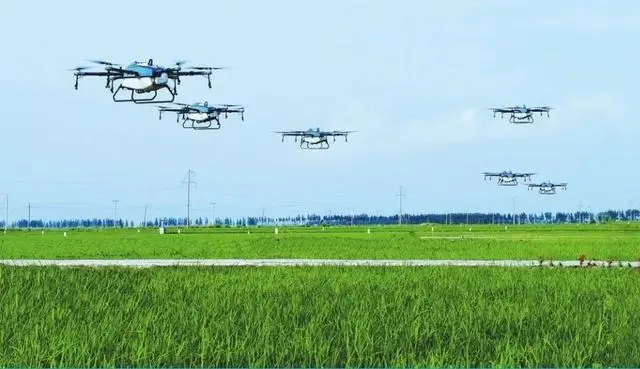Plant protection drones are unmanned aerial vehicles used for agricultural and forestry plant protection operations, mainly through ground remote control or GPS flight control to achieve intelligent agricultural spraying operations. Compared with traditional plant protection operations, unmanned aerial vehicle (UAV) plant protection operations have the characteristics of precise operation, efficient environmental protection, intelligence, and simple operation, saving farmers the cost of large machinery and a large amount of manpower. Smart agriculture and precision agriculture cannot do without plant protection drones.
Advantages of Plant Protection Drones
1. Water medicine conservation and environmental protection: spray spraying by electric unmanned helicopter can save at least 50% of pesticide usage, 90% of water consumption, and greatly reduce resource costs. The artificial speed is slow, and the spread of pests is fast. The pests that hit the back and front start again, often requiring several strikes. The drone plant protection operation is fast, and can achieve the goal in a short time in one operation. The pest control speed is fast, and it has less harm to the atmosphere, soil, and crops. Moreover, the use of Beidou navigation technology can achieve precise operation, uniform pesticide application, and obvious environmental conservation.
2. Efficient and safe: Agricultural unmanned helicopters have fast flight speeds and can operate on a scale of 120 to 150 acres per hour, with an efficiency at least 100 times higher than conventional spraying; Plant protection and flight prevention have achieved the separation of workers and drugs. Through ground remote control or GPS flight control operation, spraying operators can operate remotely to avoid the danger of exposure to pesticides.
3. Significant control effect: because the plant protection UAV adopts ultra-low spray spraying mode, and uses special flight prevention additives in plant protection flight prevention operations, the downward airflow generated by the rotor helps to increase the penetration of logistics to crops. Drone helicopters have the characteristics of low operating height, less drift, and hovering in the air. The downward airflow generated by the rotor during pesticide spraying helps to increase the penetration of logistics to crops, and has good effects in preventing diseases and pests.
4. Can work at night: Plant protection drugs are attached to the surface of plants through liquid, and the liquid is prone to evaporation when exposed to direct sunlight during the day. Its work effect is far inferior to low-temperature work at night, making it difficult for manual night work. However, the flight prevention of plant protection drones is not limited.
5. Low cost, easy operation: Electric drones have small overall size, light weight, low depreciation rate, easy maintenance, and low labor cost per unit of operation; Easy to operate, operators can generally master the essentials and execute tasks after about 30 days of training.







Please sign in to comment
register